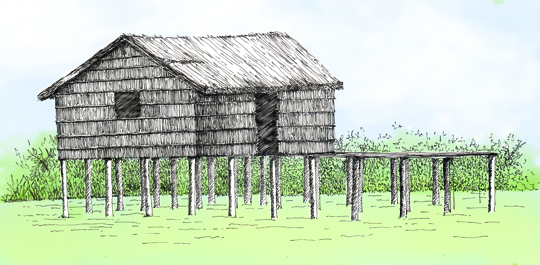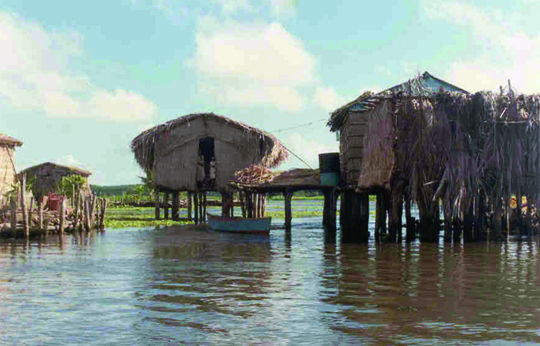By Pablo La Roche, Director of Sustainable Design
We all know that we must reduce our environmental footprint and that low-carbon buildings help to do this. Over time, buildings have become more sophisticated and there has been progress in the development of the systems that help to achieve comfort. Systems that did not exist 100 years ago can now easily provide heat and light to a building with ever increasing efficiency.
However, even with renewed research in smart materials, we have not seen the same level of progress with the building skin, which is a powerful regulator of outdoor conditions. A beautiful example is the traditional Native American home built by the Paraujanos in northwestern Venezuela. Located in a hot and very humid climate, these dwellings were raised above the water, on pilings, and performed as inhabited filters in which the different components of the building envelope—floors, walls and ceilings—were permeable, regulating sunlight, wind, views, and water. The floor, built with cane poles, permitted cool air from the water below to filter inside the building. The walls, also made of cane poles or thatch, were permeable to the wind and filtered in the light. The ceiling, thick and built with enea—a type of thatch—permitted the house to breathe, evacuating the heat while blocking the rain. Because it is opaque, enea also blocked most of the solar radiation to the interior of the building, shading it effectively. Furthermore, Paraujanos only took the food and materials that they needed from the environment, leaving enough for all. This type of house is still built today, even in urban settings, but unfortunately many of the original materials have been substituted with contemporary materials such as industrialized tin and zinc, leading to much-reduced performance. Increased density has also impacted local ecosystems.

Fast-forward 500 years to 1981. The Arab World Institute by Jean Nouvel opened with 240 motor-controlled apertures that open and close responding to exterior environmental conditions and daylight requirements inside the space, reminiscent of the permeable building envelope of the Paraujano homes. These diaphragms create a beautiful filtered light effect that is often used in Islamic architecture, and both the effect and the cost of the systems are spectacular.
How many of our designs actively engage the environment around us, and use the building form and materials to actually provide or dissipate heat and light? In how many buildings do we think of windows as nothing more than holes punched in the wall or do we fall in love with the other extreme, uncontrolled completely glazed curtain walls. How many walls do we see as nothing more than barriers that seal and separate interior from exterior? How many building skins are actually responsive to outdoor conditions? This Earth Day, let us all remember the humble Paraujano house that provided beautiful light while blocking rain and allowing wind to penetrate while being completely and absolutely 100 percent carbon neutral (and without the need for a photovoltaic system).

